BAE Systems is launching its next-generation 40mm anti-aircraft system, Tridon Mk2, at Eurosatory 2024, showcasing its unique capability to protect against ever-evolving aerial threats.
“The Tridon Mk2 is the ideal solution for combat operations, where soldiers need a proven, high-precision and reliable anti-aircraft system to keep the skies clear and protect troops and infrastructure,” said Lena Gillström, president of BAE Systems Bofors.
“The adaptability of the system, which can evolve as threats continue to change, is what makes it one of the most effective anti-aircraft systems on the market today.”
Based on the battle-proven Bofors 40mm gun and more than 90 years of experience, this self-propelled system provides security and protection for military forces and civil infrastructure.
“On today’s battlefields, tens of thousands of drones are shot down every month, and this new threat has exposed a dangerous gap in current air defence capabilities for NATO allies.
The Tridon Mk2 offers a solution to help fill that gap. It is a mobile anti-aircraft system with high-precision, teamed with critical munitions capabilities, including the Bofors 3P programmable munition which forms the backbone of the system, designed for defeating a wide range of aerial and land-based threats. The system has an effective range of up to 12km, depending on the target, selected ammunition, sensor suite and surrounding terrain. It is a flexible option for any military, offering the ability to mix a large variety of ammunition in the same firing salvo.
The system’s modularity enables it to be mounted on various platforms and fully operated from within the cabin. This allows for both rapid deployment into action and for troops to regroup to avoid enemy countermeasures. It can also be off-loaded at strategic locations and remotely controlled from a safe distance.”
Each system has its own day-night acquisition sensors and fire-control system, which makes it a cost-effective solution to protect large areas.
The Tridon Mk2 will be displayed on the BAE Systems stand at Eurosatory from 17 – 21 June 2024 (Hall 5A, stand B369).


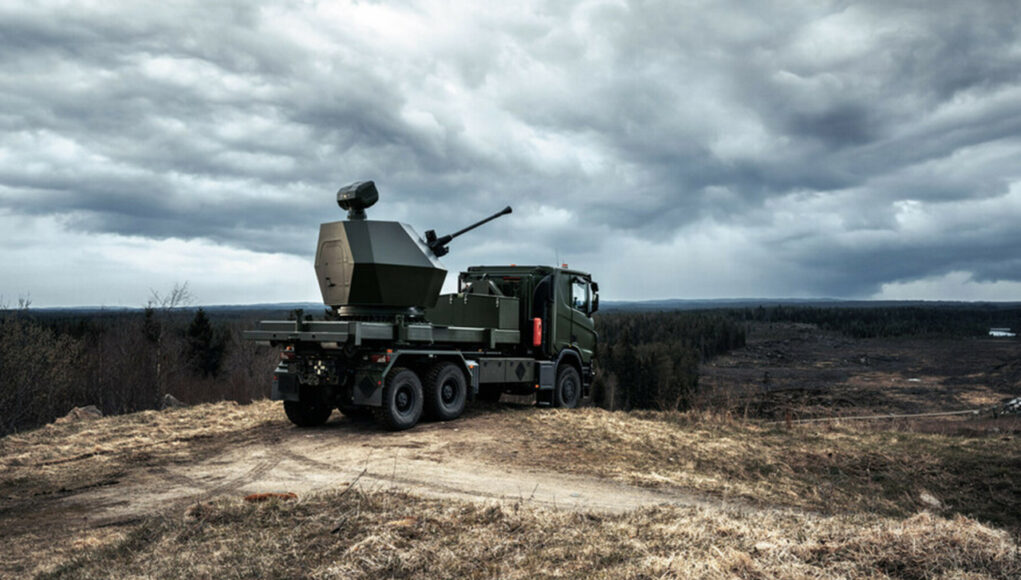




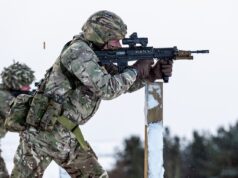
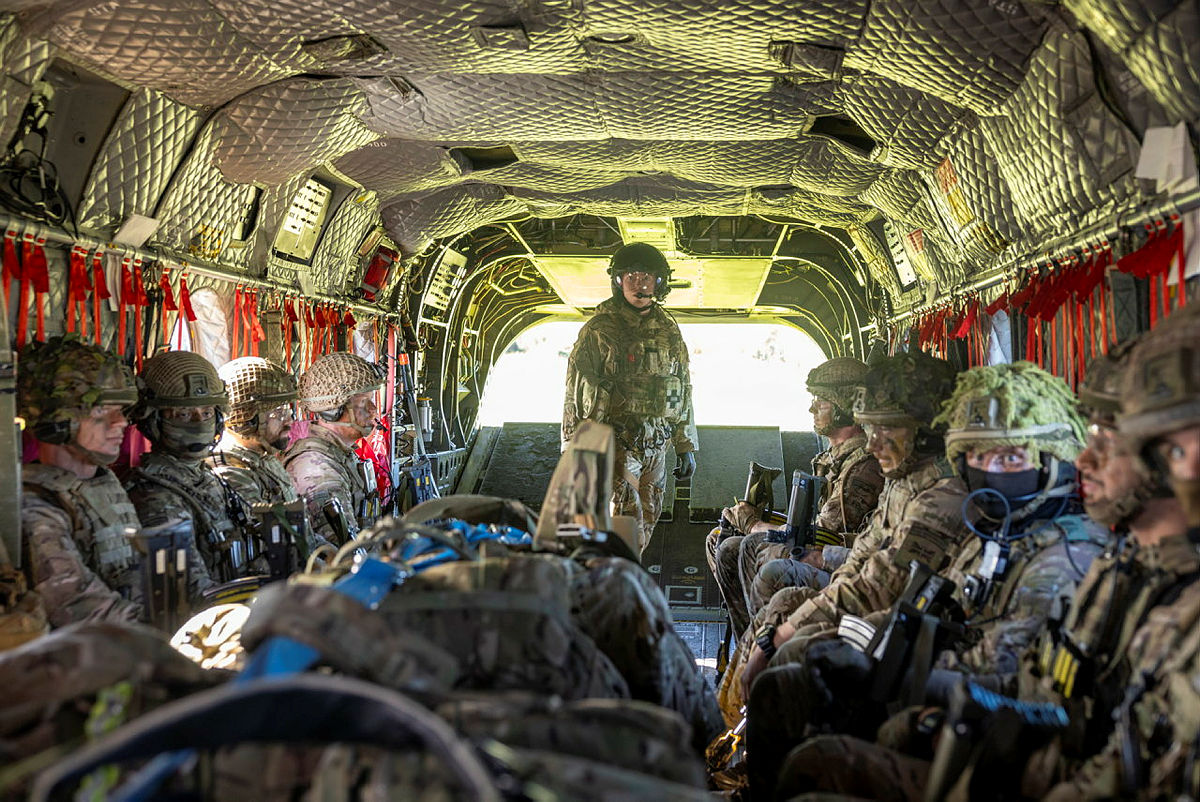
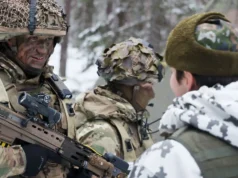


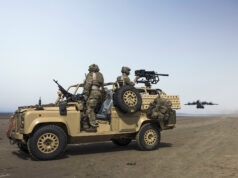

Same as the T31??
Looks like something we should invest in?
Looks pretty darn good. Nice and compact mount. Is it Anglo-Swedish or one or the other? Can they put a couple of these 40mm on the Carriers to boost their defensive abilities and complement the Phalanx’s?
Part of mobile or base SHORAD and complement CAMM?
Could simply replace the 30mm mounts. Does the job better in every role & engages at longer range than 30mm. Possibly better than Phalanx too if given an integrated radar & automated targeting.
But will it fit on the back of a Boxer?!
Looks like it could fix a big hole caused by the increasing threat from drones.
Perfect. 40mm Bofors+ radar guided. What’s not to like. Get some ordered asap.
I’ve found pictures elsewhere that show the front angle.
That thing on top is an E/O guidance turret, very similar to the Mirador one from T31. It is just moving the same fire control method from that spot in front of the mast to on top of the turret.
Still an improvement were it to be done at sea because it makes the turret self contained.
Morning SB, how’s your GSCEs going? Hope you’re getting through it all while being distracted by ukdj! 😎 🇦🇺
Only 2 to go now with long gaps in between, so plenty of time for revision and UKDJ in the breaks.
I do wish the articles came out at fixed times; that way I could schedule a time to read them. At the moment they just all get dumped between 9 and 3 during the day.
Hope you do well across the board. Don’t slacken! Lol with the ukdj timing, we’re 9 hours ahead here in Sydney 🇦🇺.
And 5 hours behind in Eastern Canada 🙂
Now take the fire control package off that and put it on the guns from T31 so that they can act as a regular CIWS without being dependent on 3rd party sensors.
Would work especially well on OPV replacements and RFAs etc. because the mounts would work independently.
This looks like BAE setting themselves up in competition with the Thales Rapidfire, an essentially identical system. They’re very similar but if this is the same as the naval mount then I think BAE top it with better range, the 3P stuff and RoF.
Good looking system, it would have commonality with the Navy as well. 12km range puts it outside of the range of the cheapest FPV drones whilst still being effectively able to engage the more troublesome Lancets, 3P ammunition would be a massive capability increase over what things like Gepard currently use and using EOS instead of radar makes it much more survivable than current SPAAG systems.
Depending on how much it costs and what each battery consists of it could be a cheap, soft way of reintroducing GBAD across key UK areas. Procuring them for the RAF regiment would protect our few (and very vulnerable) airbases from a cheap mass drone attacks from Russia that would overwhelm the Typhoons – or even against something like a revived IRA type organization attempting drone IED attacks against military infrastructure. Having them available for the nuclear constabulary to prevent drone based terrorism against civil nuclear sites probably could pay off big time in the future, seeing as terrorist organizations are beginning to utilize drone munitions asymmetrically now against civil targets the danger of these attacks will eventually reach Europe. For the same reason as the RAF, the navy may too benefit from having more hard kill land based systems for counter UAV/SHORAD against aerial threats coming for the undefended ships in port.
I do wonder how we would expect to protect our naval and airbases against Russian submarine launched missiles or a mass drone waves coming from no state actors. The QRA aircraft would be very quickly depleted and with no SHORAD or area defenses deployed at all on UK soil we’d just have to pray nothing important gets hit, something like this really should be the absolute minimum. May even pay off one day.
I agree.
I wonder if it’s demountable like the CAMM units, or is tied to the vehicle’s power supply and control?
It would be really nice if each major base had one of these just sitting in the corner scanning the sky. 3P means that there’s little to no risk of collateral damage because the shell always self-detonates after 15s.
IMO this is a much better option than Rapidfire. It has more range, a higher rate of fire and is more British.
Hello mate.
No idea, weapon capability isn’t my area.
Each major base would mean quite a few mate. For now, fantasy fleets sadly.
How are you supposed to work out ORBATs if you don’t know the weapons?
I smell a rat… 😉
I was just thinking the really critical ones e.g. fighter bases, Brize Norton, Faslane etc.
The ones that would be genuinely war-ending if they were overwhelmed.
Dozens mate. Dozens.
Aren’t all of your MILINT sites deep in underground bunkers?
You can also tailor to the sites most vulnerable to that sort of Shahed UAV attack.
That is classified mate, so I would not know for certain.
I know of several underground bunkers, I suspect some based on my research, and I know of some locations that do not seem to have such protection.
UG stuff is another of my areas of interest. Much of it went after the Cold War, so long before your time mate.
The places with them are pretty easy to guess.
Think I’ve seen a road sign “Secret nuclear bunker” somewhere in the Essex area.
Yes, that is Kelvedon Hatch mate. Now a museum, hence the sign! Was declassified after the Cold War. Was an RSG, Regional Seat of Government if London had been flattened.
There is another in Scotland at Anstruther that is also now open to the public.
Just crossed my mind but I wonder if there are any moves anywhere to develop submarine launched kamikaze drones that theoretically at least, could be deployed and strike unguarded targets with little to no warning, yet be almost impossible to detect or determine the origin or perpetrator. I’m sure the Russians would just love to hit UK targets with little to no prospect of retaliation even if we knew through intelligence they were behind it.
If we knew the perpertrator through intelligence it would be an attack on a NATO member & illicit a definate response.
We obviously need more GBAD urgently rather than cutting back, hoping for the best & crossing our fingers. Bit like having a house but removing the roof to save a few quid & just hoping it will never rain.
Absolutely agree good post mate 🍺
Maybe the royal artillery could reform a disbanded regiment and equip it with this kit I know pie in the sky it will necer happen
I’m hearing one way attack drones are in the pipeline next for the RA.
Agree on this.
I’m sure 32 and 47 would incorporate those what the ra needs is a regiment with 3 batteries of anti drone equipment
Yes, I assume so. Though I also hear the AAC is throwing its hat in the ring. 5 AAC “may” become a UAV/drone outfit and move to the “new” UAV Group.
Would the RA take the surveillance side and the AAC the offensive side?
That rumour has been rumbling for some time, the army have taken ages to provide details. And now with the GE, probably wont.
Yep, would love a Reg of an AA type like this to complement the expansion of SHORAD and MRAD already outlined by CGS.
Yes similar happened with Swingfire the artillery had it the tankies wanted that was 32 in Bulford if I remember correctly
Pies in the sky would be mincemeat if we had this!😄
Wouldn’t fancy eating a pie full of tungsten pellets, as well.
Definitely not SOP for getting dinner on the front lines.
Absolutely but I think we need this cabability deployed correctly would be a great asset I’m sure it will be trialled in Ukraine
The idea is good, but the execution for the UK not so, or is it? With the T31 and Ajax using different guns and ammunition types, but around a common 40mm calibre. There is no logistical commonality. Which means we have two separate logistic streams.
In the ideal world, the Navy would have opted for the CTAS40. Which would then mean the Army has better spending power on ammunition costs. But they chose a different path.
The Bofors 40/L70 is a tried and trusted weapon system. Using 3P ammunition it should be more than capable against all types of drone threats.
The prototype shown in the image, looks like the turret from a T31 plonked on the back of a truck. In this guise it can only realistically be used for static defence. What the Army really needs is a SPAAG system that can move and stay with the forward line of conflict. Therefore, something highly mobile but also armoured is required.
The obvious choice would be based on a Boxer chassis, though nothing stopping us from using an Ajax chassis. But instead of the huge T31 type turret, use a lower profile turret, where the main ammunition magazine is stored below the turret. As it’s close to the forward line a coaxial MG woukd be highly beneficial along with a RWS mounting a further MG. For further enhancement, you could add Starstreak, giving it a multilayer capability. Though Starstreak will need its range extending to cancel the Ka-52’s ATGM advantage.
To detect the small FPV quadcopter types of drone. You will need an active radar. As the IR signal is so small, you won’t detect it until it gets too close. The radar will need to be operating in the Ku or preferably in Ka band (26.5 to 40GHz). As that will get a good hit off the drone’s wiring, motors, ECU and possibly the battery. Depending on the radar’s effective radiated power (ERP), you should be able to get a hit from at least 2km away. Hopefully aiming for at least 15 to 20km. As that would also close the gap when facing a Kh-52.
In this SPAAG build, I would choose the CTAS40 over the Bofor’s 40/L70. Firstly for logistical commonality with Ajax. But secondly due to the CTAS having a higher muzzle velocity. Which will give better anti-air effective range. As the shell path is straighter for longer. Rate of fire in this instance is not so important.
Will we order 3? Maybe 4 even??
We need a regiment 3 batteries as brigade assets
We need this yesterday in decent numbers. Quite a flexible system.
So a 40mm Bofus and Chess Dynamics Hawkeye sensor. It is a nice compact and in-one system for other platforms that don’t have an integrated fire and control system. e.g. small ships.
12km effective range. Haha. If pointing the gun at 45º elevation and the rounds falling in the ground 12km distant can be called “effective”.
But at least they are doing something against drones.
Just to understand the shear number we are talking about:
Well looks like a good system ,Err guess looking like we’ll have to ask Mr starmer 🙄
There’s too many calibres going on in the small/medium range. RAPIDFire (40 CTAS), Skyranger (30/35mm) and Tridon (40 mm). It seems to me that with the armed forces limited resources there should be as few types as possible. SHORAD, SPAAG, land and naval based AA systems as well as IFV and turreted Boxer variants need to all have the same ammunition. In which case, which is the best or most capable option?